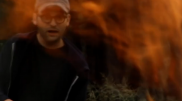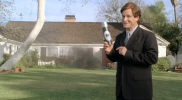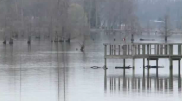Chernobyl: A Brief History
On April 26, 1986, while scientists tested backup power supplies for its four nuclear reactors, an accident occured at the Chernobyl nuclear complex in Russia.
On April 28, President Reagan’s Chief of Staff Donald Regan announced that the U.S. was willing to help.
According to AP, Radio Moscow said the accident was a "disaster." Government-run radio in Hungary reported that there were injuries. Communication was slow-coming. It was not yet clear what type of reactor it was that malfunctioned, whether a pressurized water unit like at Three Mile Island or a Soviet design, a graphite moderator model.
Gordon Hurlbert, a retired U.S. atomic industry executive who had toured Soviet facilities (but not Chernobyl), said Soviet reactors had not been thoroughly repaired for years.
The U.S. embassy in Moscow made contact with Intourist, the Soviet governmental travel service, regarding American tourists in the area. However, U.S. agencies were not yet contacted for help.
After “a few millirems an hour” were recorded in Scandinavia, 10 times the normal amount, Moscow issued a statement on the accident.
To put it in perspective, chief nuclear scientist for the Electric Power Research Institute in Palo Alto, Calif. told the Associated Press, "If the radioactivity is a few millirem 700 miles away, I'd hate to be within 10 miles."
A radioactive cloud was reported as passing over Western Europe on April 29. Scientists surmised that the Chernobyl accident was to blame and raised doubts about the Soviets' safety standards.
An EPA official said debris could reach the western U.S. by passing over the north pole.
By May 6, more information came to light. It was suspected that the Soviet Union secretly warned ally Poland about the dangerous Chernobyl explosion the day it happened. Although Moscow officially announced the disaster two days after the accident on April 28, there were reports of individuals in Poland stocking up on iodine on April 26.
Tass (U.S.S.R.’s official news agency) reported that radiation was found as far as Ukraine and in bordering Byelorussia. On May 6, Pravda, the official Communist Party paper, published an account of the accident, describing heroic firefighters battling 30-foot flames; the fire still blazed. Boris Yeltsin said he would allow foreign experts to inspect the site, once it was safe.
On May 10, the fire was put out and a “China Syndrome” meltdown (when the reactor core melts through its foundation) seemed unlikely, according to nuclear experts. All conclusions were based on Soviet information; no independent research had been conducted by quoted experts. Released Soviet data on radiation levels around Chernobyl were at least 50 percent lower than other reports -- 15 milliroentgens instead of 36.
Soviet experts planned on entombing the structure in concrete to trap radiation. Canadian officials warned against drinking rain water. Kiev schoolchildren were given summer vacation 10 days early.
Robert Gale, a bone marrow specialist, said 35 people had suffered severe radiation exposure. By May 15, seven had already died, and Gale expected more. Two people also died onsite at the explosion, according to a televised address by Gorbachev the day before. Nineteen people had already received a bone marrow transplant.
By May 17, 13 people had died as a result of the accident. Gale said 100,000 people needed to be monitored for cancer for decades.
Thanks to the effective measures taken, it is possible to say today that the worst has passed. ... Of course the end is not yet. It is not time to rest.
Gorbachev said that a Western anti-Soviet campaign after the accident hurt chances of a second summit with President Reagan. Vladimir Lomeiko, a foreign ministry spokesman, said the Western media created a false mood of panic.
The Soviet Union said it would refuse to pay compensation to Western European farmers who claimed the radioactive cloud passed over their farmland, bringing unknown contamination.
In August, a Russian report indicated radiation was higher and more widespread than originally thought. Topsoil from a 1000-square mile radius was being taken away as nuclear waste. The report said that the accident was a result of a poorly run test, during which workers ignored six safety rules, to see how long turbines would run in case of an unexpected shutdown.
Scientists Lev Khitrov and Richard Wilson toured the Chernobyl site a year after the accident. Local towns were still not inhabited. There were some changes: along with a new chief engineer, the nuclear plant's security was heightened and more indepth training was provided.





